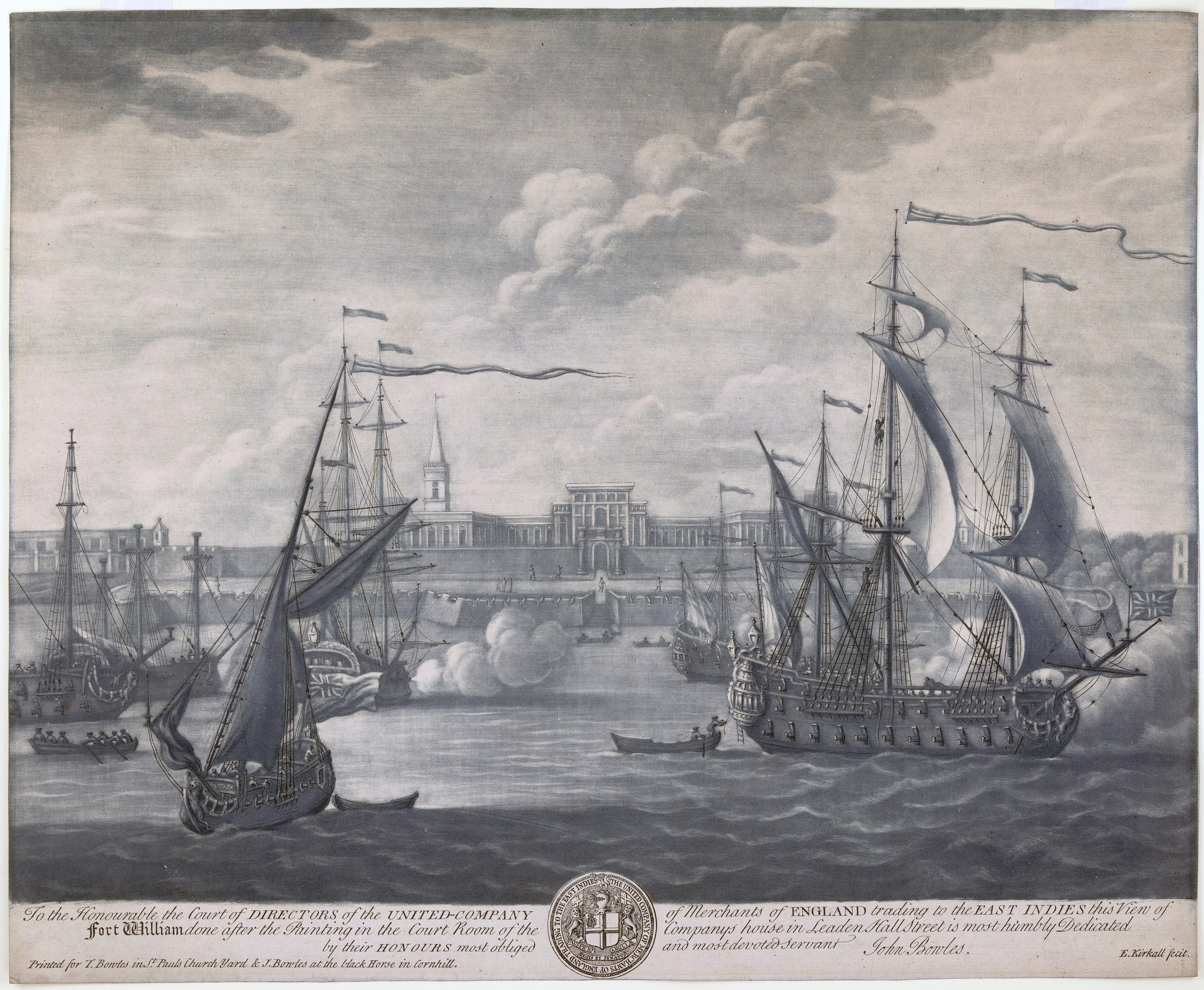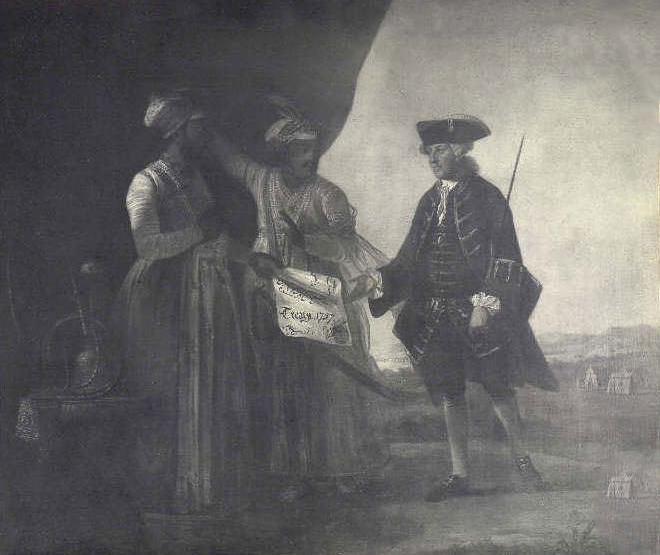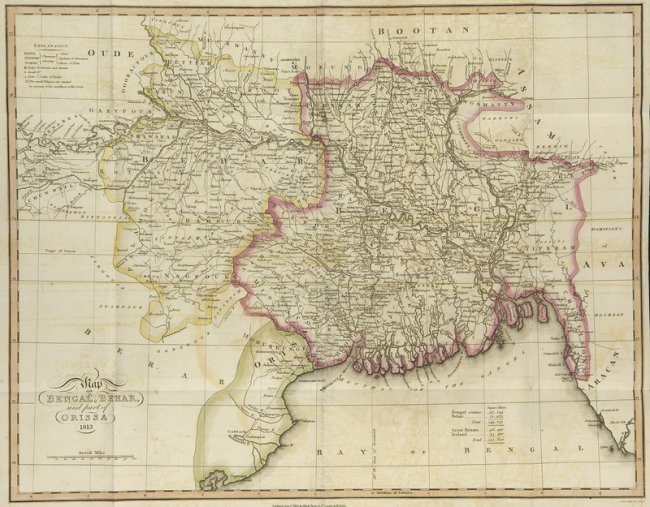|
Ultadanga
Ultadanga is one of the most crowded junctions in Kolkata. The place is located at the north-eastern fringe of the city and marks the limit of Kolkata district. Prominent places in Ultadanga are Telenga Bagan and Muchi Bazar. Etymology Ultadanga lay outside the Maratha Ditch, beyond Halsibagan, where the Sikh billionaire Umichand had a garden. It was the land on the opposite bank (''ulta'' in Bengali).Nair, P.Thankappan, ''The Growth and Development of Old Calcutta'', in ''Calcutta, the Living City'', Vol. I, pp. 14-15, Edited by Sukanta Chaudhuri, Oxford University Press, 1995 edition. History The East India Company obtained from the Mughal emperor Farrukhsiyar, in 1717, the right to rent from 38 villages surrounding their settlement. Of these 5 lay across the Hooghly in what is now Howrah district. The remaining 33 villages were on the Calcutta side. After the fall of Siraj-ud-daulah, the last independent Nawab of Bengal, it purchased these villages in 1758 from Mir Jafar ... [...More Info...] [...Related Items...] OR: [Wikipedia] [Google] [Baidu] |
Divisions Of Kolkata Police
Kolkata Police is divided into nine administrative divisions. Each division is under a Deputy Commissioner of Police. North and North Suburban Division With its divisional head office at 113, Acharya Prafulla Chandra Road, Kolkata-700009, the North and North Suburban Division has the following police stations: Eastern Suburban Division With its divisional head office at 105, Hem Chandra Naskar Road, Kolkata-700010, the Eastern Suburban Division has the following police stations: Central Division With its divisional head office at 138, S.N.Banerjee Road, Kolkata-700013, the Central Division has the following police stations: South Division With its divisional head office at 34, Park Street, Kolkata-700016, the South Division has the following police stations: South East Division With its divisional head office at Park Court, 2, Syed Amir Ali Avenue, Kolkata-700017, the South East Division has the following police stations: South Suburban Division With its divisional h ... [...More Info...] [...Related Items...] OR: [Wikipedia] [Google] [Baidu] |
Beliaghata
Beliaghata, also known as Beleghata, is a neighbourhood of Central Kolkata, in Kolkata district, West Bengal, India. History The East India Company obtained from the Mughal emperor Farrukhsiyar, in 1717, the right to rent from 38 villages surrounding their settlement. Of these 5 lay across the Hooghly in what is now Howrah district. The remaining 33 villages were on the Calcutta side. After the fall of Siraj-ud-daulah, the last independent Nawab of Bengal, it purchased these villages in 1758 from Mir Jafar and reorganised them. These villages were known en-bloc as ''Dihi Panchannagram'' and Beliaghata was one of them. It was considered to be a suburb beyond the limits of the Maratha Ditch. In 1889, the 'fringe areas' of Maniktala, Ultadanga and Beliaghata were added to the Kolkata Municipal Corporation.Nair, P.Thankappan, ''The Growth and Development of Old Calcutta'', in ''Calcutta, the Living City'', Vol. I, p. 13, Edited by Sukanta Chaudhuri, Oxford University Press, 199 ... [...More Info...] [...Related Items...] OR: [Wikipedia] [Google] [Baidu] |
Maniktala
Maniktala is a residential area of North Kolkata, in Kolkata district, West Bengal, India. Etymology The tomb of Manik Pir is located in lane near Maniktala crossing. Some people say, the neighbourhood is named after Manik Pir. Others say, Manik pir (erst: Syed Husen Ud din shah) came from North India on early eighteenth century. But Maniktala, this name is also mentioned in a map of 1784. They say, the bodyguard of Nawab of Bengal Alivardi Khan, Manikchand Bose (erst : Manikram Bose) lived in this place as the caretaker of Calcutta (Ali Nagar) around from 1756. He was a wise, Compassionate man. That's why he was so popular to all people. From Manikchand this area is called Maniktala. History In 1889, the suburbs of old Calcutta were grouped in four municipalities. Maniktala formed the East Suburban Municipality. In the same year, Maniktala, Ultadanga and Beliaghata became 'fringe area wards' of Kolkata Municipal Corporation. The Calcutta Municipal Act of 1923 brought a ... [...More Info...] [...Related Items...] OR: [Wikipedia] [Google] [Baidu] |
Kolkata Police
The Kolkata Police Force (KPF) is one of the two presidency police forces of the Indian state of West Bengal. Kolkata Police has the task of policing the metropolitan area (apart from Bidhannagar and New Town, which are served by the Bidhannagar City Police, the area in Howrah City is managed by Howrah City Police and the area in Hooghly City is managed by Chandannagar Police Commisionerate) of Kolkata (formerly Calcutta), India, as defined under the Calcutta Police Act, 1866 and the Calcutta Suburban Police Act, 1866. The primary functions of the forces are maintaining law and order in the city, traffic management, prevention and detection of crime and co-ordinating various citizen-centric services for the people of Kolkata. , Kolkata Police has eight divisions covering 79 police stations. It has a strength of approximately 35,000 and a territorial jurisdiction of . There are eight battalions of armed forces as well as specialised branches. The force also uses various modern ... [...More Info...] [...Related Items...] OR: [Wikipedia] [Google] [Baidu] |
Dihi Panchannagram
Dihi Panchannagram was a group of 55 villages which the East India Company purchased in 1758 from Mir Jafar, after the fall of Siraj-ud-daulah, the last independent Nawab of Bengal, in what is now the city of Kolkata, earlier known as Calcutta, in Kolkata district, in the Indian state of West Bengal. These villages initially developed as suburbs of Kolkata, but now forms part of the city proper within the limits of the Kolkata Municipal Corporation. Background In the early years of the 18th century, Calcutta was a small settlement spread across a narrow stretch on the east bank of the Hooghly. Most of the English residences were to be found around what was then the fort in Kalikata. To its north was ''Sutanuti hat'' (cotton and yarn market), and still north lay the native area of Sutanuti. To the south, Gobindapur was a forested area. Beyond the English settlement lay Chitpur and Kalighat, and across the river lay Betor and Salkia. In 1742, the Marathas burst into Bengal, an ... [...More Info...] [...Related Items...] OR: [Wikipedia] [Google] [Baidu] |
Kolkata
Kolkata (, or , ; also known as Calcutta , List of renamed places in India#West Bengal, the official name until 2001) is the Capital city, capital of the Indian States and union territories of India, state of West Bengal, on the eastern bank of the Hooghly River west of the border with Bangladesh. It is the primary business, commercial, and financial hub of East India, Eastern India and the main port of communication for North-East India. According to the 2011 Indian census, Kolkata is the List of cities in India by population, seventh-most populous city in India, with a population of 45 lakh (4.5 million) residents within the city limits, and a population of over 1.41 crore (14.1 million) residents in the Kolkata metropolitan area, Kolkata Metropolitan Area. It is the List of metropolitan areas in India, third-most populous metropolitan area in India. In 2021, the Kolkata metropolitan area crossed 1.5 crore (15 million) registered voters. The ... [...More Info...] [...Related Items...] OR: [Wikipedia] [Google] [Baidu] |
Shobhabazar Sutanuti Metro Station
Shobhabazar Sutanuti is a station of the Kolkata Metro. It is located near Shobhabazar. History Construction The station Structure Shobhabazar Sutanuti is underground metro station, situated on the Kolkata Metro Line 1 of Kolkata Metro. Station layout Connections Bus Bus route number 3B, 30C, 43, 47B, 78, 211, 211A, 211B, 214, 214A, 215/1, 215A, 219/1, 222, 242, 5 (Mini), 7 (Mini), S139 (Mini), S159 (Mini), S160 (Mini), S161 (Mini), S163 (Mini), S164 (Mini), S166/1 (Mini), S168 (Mini), S175 (Mini), S176 (Mini), S180 (Mini), S181 (Mini), S189 (Mini), C28, E32, S9A, S10, S11, S15G, S17A, S32, S32A, S57, AC20, AC40, AC54 etc. serve the station. Train Sovabazar Ahiritola railway station is the nearest rail station. Bidhannagar Road railway station is also located nearby. Auto Ahiritola to Ultadanga via Shobhabazar Sutanuti Metro Station and B.K.Paul to Cossipore 4B Bus stand via Baghbazar Entry/Exit Gallery File:Sova_Gate_1.jpg, Gate no. 1 of the metro station Fil ... [...More Info...] [...Related Items...] OR: [Wikipedia] [Google] [Baidu] |
Maratha Ditch
The Maratha Ditch was a 3-mile long deep entrenchment constructed by the English East India Company around Fort William in Calcutta. It was built to protect the surrounding villages and forts from the ruthless Maratha Bargi raiders. The ditch marked the outer limits of Calcutta city in the nineteenth century. History During the Maratha invasions of Bengal, the mercenaries employed by the Marathas of Nagpur called Bargis devastated the countryside thoroughly, causing huge economic losses for Bengal. In 1742, the president of the East India Company in Bengal petitioned the ''nawab'' Alivardi Khan to create an entrenchment intented to circle the landward sides of Calcutta. This request was immediately granted by Alivardi Khan, and in 1743 the Indians and Europeans co-operated to excavate a 3-mile long ditch north of Fort William, which came to be known as the Maratha Ditch. However, the threat of Maratha invasions ceased before the ditch could be completed and it was left u ... [...More Info...] [...Related Items...] OR: [Wikipedia] [Google] [Baidu] |
Mir Jafar
Sayyid Mīr Jaʿfar ʿAlī Khān Bahādur ( – 5 February 1765) was a military general who became the first dependent Nawab of Bengal of the British East India Company. His reign has been considered by many historians as the start of the expansion of British control of the Indian subcontinent in Indian history and a key step in the eventual British domination of vast areas of pre-partition India. Mir Jafar served as the commander of the Bengali army under Siraj ud-Daulah, the Nawab of Bengal, but betrayed him during the Battle of Plassey and succeeded Daulah after the British victory in 1757. Mir Jafar received military support from the East India Company until 1760, when he failed to satisfy various British demands. In 1758, Robert Clive discovered that Jafar had made a treaty with the Dutch East India Company at Chinsurah through his agent Khoja Wajid. Dutch ships of the line were also seen in the River Hooghly. Jafar's dispute with the British eventually led to the ... [...More Info...] [...Related Items...] OR: [Wikipedia] [Google] [Baidu] |
Nawab Of Bengal
The Nawab of Bengal ( bn, বাংলার নবাব) was the hereditary ruler of Bengal Subah in Mughal India. In the early 18th-century, the Nawab of Bengal was the ''de facto'' independent ruler of the three regions of Bengal, Bihar, and Orissa which constitute the modern-day sovereign country of Bangladesh and the Indian states of West Bengal, Bihar and Orissa. They are often referred to as the Nawab of Bengal, Bihar and Orissa ( bn, বাংলা, বিহার ও উড়িষ্যার নবাব). The Nawabs were based in Murshidabad which was centrally located within Bengal, Bihar, and Odisha. Their chief, a former prime minister, became the first Nawab. The Nawabs continued to issue coins in the name of the Mughal Emperor, but for all practical purposes, the Nawabs governed as independent monarchs. Bengal continued to contribute the largest share of funds to the imperial treasury in Delhi. The Nawabs, backed by bankers such as the Jagat Seth, became ... [...More Info...] [...Related Items...] OR: [Wikipedia] [Google] [Baidu] |
Siraj-ud-daulah
Mirza Muhammad Siraj-ud-Daulah ( fa, ; 1733 – 2 July 1757), commonly known as Siraj-ud-Daulah or Siraj ud-Daula, was the last independent Nawab of Bengal. The end of his reign marked the start of the Company rule in India, rule of the East India Company over Bengal Presidency, Bengal and later almost all of the Indian subcontinent. Siraj succeeded his maternal grandfather, Alivardi Khan as the Nawab of Bengal in April 1756 at the age of 23. Betrayed by Mir Jafar, the commander of Nawab's army, Siraj lost the Battle of Plassey on 23 June 1757. The forces of the East India Company under Robert Clive invaded and the administration of Bengal fell into the hands of the company. Early life and background Siraj was born to the family of Zain ud-Din Ahmed Khan, Mirza Muhammad Hashim and Amina Begum in 1733. Soon after his birth, Alivardi Khan, Siraj's maternal grandfather, was appointed the Deputy Governor of Bihar. Amina Begum was the youngest daughter of Alivardi Khan and Prince ... [...More Info...] [...Related Items...] OR: [Wikipedia] [Google] [Baidu] |
Hooghly River
The Bhagirathi Hooghly River (Anglicized alternatively spelled ''Hoogli'' or ''Hugli'') or the 'Bhāgirathi-Hooghly', called the Ganga or the Kati-Ganga in mythological texts, is the eastern distributary of the Ganges River in West Bengal, India, rising close to Giria in Murshidabad. The main distributary of the Ganges then flows into Bangladesh as the Padma. Today there is a man-made canal called the Farakka Feeder Canal connecting the Ganges to the Bhagirathi. The river flows through the Rarh region, the lower deltaic districts of West Bengal, and eventually into the Bay of Bengal. The upper riparian zone of the river is called Bhagirathi while the lower riparian zone is called Hooghly. Major rivers that drain into the Bhagirathi-Hooghly include Mayurakshi, Jalangi , Ajay, Damodar, Rupnarayan and Haldi rivers other than the Ganges. Hugli-Chinsura, Bandel, Chandannagar, Srirampur, Barrackpur, Rishra, Uttarpara, Titagarh, Kamarhati, Agarpara, Baranagar and ... [...More Info...] [...Related Items...] OR: [Wikipedia] [Google] [Baidu] |






